Nature has a wicked sense of humor, dressing up some of its most dangerous creatures in irresistibly cute packaging. These animals lure us in with fluffy fur, big eyes, and charming behaviors, hiding weapons of mass destruction beneath their adorable exteriors. From venomous mammals to murderous waterfowl, this countdown reveals the shocking truth behind nature’s most deceptive charmers. You’ll never look at that cuddly-looking creature the same way again after learning about the surprising dangers lurking behind those innocent faces. Prepare for a wild ride through zoology’s most clever disguises!
12. Slow Loris – The Venomous Cuddle Monster
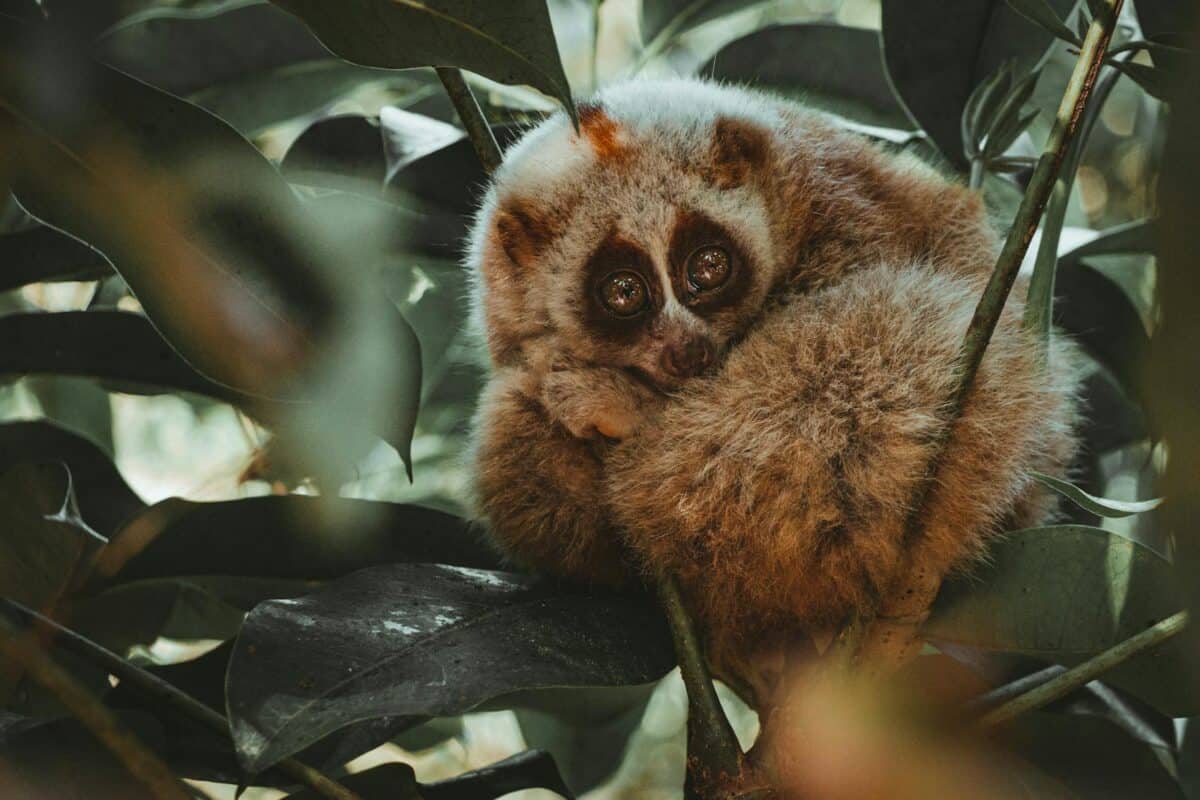
With their saucer-like eyes and teddy bear proportions, slow lorises seem like perfect primate pets. But these nocturnal tree-dwellers pack a terrifying secret – they’re the world’s only venomous primates. Their adorable appearance masks a toxic bite that can send humans into anaphylactic shock.
The Hidden Venom System
Slow lorises possess:
- Modified sweat glands in their elbows that produce toxins
- Special grooves in their teeth to deliver the venom
- Ability to lick these glands to create a poisonous bite
- Venom that causes necrotic wounds and extreme pain
Their toxin is chemically similar to cat allergens, making it especially dangerous.
The Illegal Pet Trade Problem
Despite the dangers:
- Poachers cruelly remove their teeth to make them “safer” pets
- 90% of captured lorises die from infection or stress
- Survivors often starve from inability to eat properly
- YouTube videos increased demand by 400% in a decade
All eight loris species are now endangered due to this trade.
Victim Testimony
“I thought I was just playing with a cute monkey,” recalls loris bite victim Mark Palmer. “Within minutes my arm swelled to twice its size, and I spent three days in the hospital. The pain was unimaginable.”
11. Platypus – The Duck-Billed Assassin
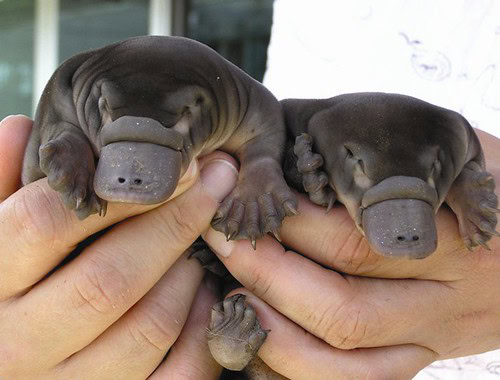
Australia’s famous egg-laying mammal looks like a children’s cartoon character come to life, complete with a beaver tail and duck bill. But male platypuses have a secret weapon – venomous spurs on their hind legs capable of incapacitating grown men.
The Venomous Spur
Platypus venom:
- Contains over 80 different toxins
- Causes immediate excruciating pain
- Can induce temporary paralysis
- Makes victims hypersensitive to pain for months
There is no antivenom for platypus stings.
Hunting Adaptations
Their unique features serve deadly purposes:
- Electroreceptive bill detects prey muscle movements
- Webbed feet become razor-sharp claws when extended
- Waterproof fur hides their approach in water
- Venom production peaks during mating season
They’re essentially furry, duck-faced Navy SEALs.
Historical Encounters
Early Australian settlers reported:
- Dogs being stung and howling for days
- Victims begging for amputation of stung limbs
- No known human fatalities, but several close calls
Modern treatment involves opioid painkillers and nerve blocks.
10. Pufferfish – Deadly Balloons of the Deep

These comical fish with their big eyes and ability to puff up into spiky balls seem like underwater clowns. But don’t let their amusing appearance fool you – pufferfish contain enough tetrodotoxin to kill 30 adult humans, with no known antidote. Their toxicity makes them the second most poisonous vertebrates on Earth.
The Neurotoxic Nightmare
Pufferfish poison:
- Is 1,200 times more deadly than cyanide
- Causes complete paralysis while keeping victims fully conscious
- Shuts down nervous system function within 20 minutes
- Requires ventilator support for survival
Just 2mg of toxin can be lethal – about the weight of a snowflake.
Japanese Delicacy Danger
Despite the risks:
- Fugu (pufferfish) chefs train for 3+ years to prepare it safely
- Illegal preparation causes 50+ poisonings annually in Japan
- A single mistake can leave diners brain dead
- The liver is 200x more toxic than the flesh
The thrill of cheating death drives its popularity.
Survivor Accounts
“I could hear everything but couldn’t move or blink,” recalls fugu poisoning survivor Hiroshi Ogawa. “Doctors told my family I might be ‘locked in’ forever. After three days, I miraculously recovered movement starting with my pinky finger.”
9. Blue-Ringed Octopus – Golf Ball-Sized Killer
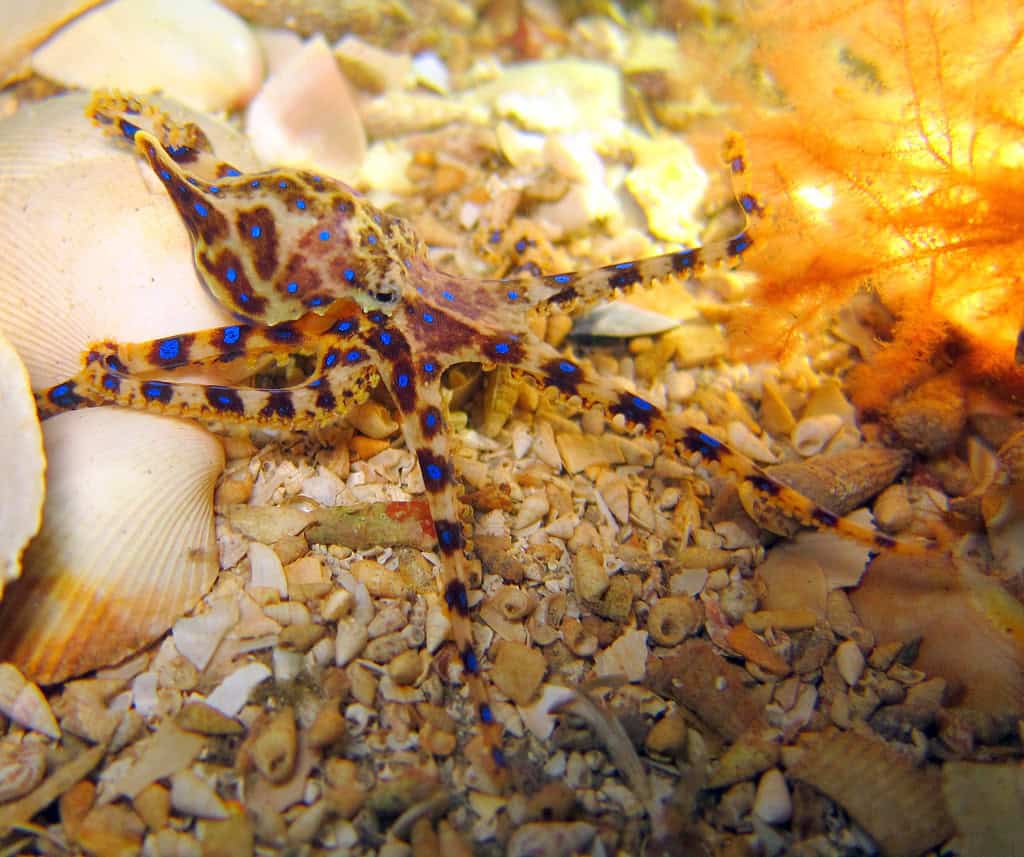
No bigger than a tennis ball and sporting mesmerizing neon blue rings, this tiny cephalopod looks like a living jewel. But its vibrant display is actually a warning – it carries enough venom to kill 26 humans in minutes, making it the ocean’s most venomous creature.
The Venom Delivery System
This octopus packs:
- Tetrodotoxin and neurotoxins in saliva glands
- Beak strong enough to puncture wetsuits
- Nearly painless bite that often goes unnoticed
- Venom that paralyzes instantly with no antidote
Victims often realize they’ve been bitten only when paralysis sets in.
Beachgoer’s Nightmare
Dangers include:
- Hiding in discarded shells and bottles
- Curious children picking them up at tide pools
- Multiple bites occurring during mating season
- Frequent misidentification as “pretty little octopuses”
Australian beaches post warning signs during peak seasons.
Near-Fatal Encounter
“I was taking underwater photos when it crawled onto my hand,” says diver Mark Gomez. “Within minutes I couldn’t breathe on my own. The lifeguard performed CPR for 4 hours until the venom wore off. I remember every second of being paralyzed.”
8. Moose – The 1,500-Pound Keg of Rage

With their comically long faces and gangly legs, moose look like awkward gentle giants. But these massive ungulates are responsible for more wildlife attacks in North America than bears and wolves combined. During rutting season, a bull moose’s testosterone levels increase 20-fold, turning them into aggressive tanks that can charge at 35 mph.
Anatomy of Destruction
Moose weaponry includes:
- 1,200 PSI bite force (stronger than pit bulls)
- Razor-sharp hooves the size of dinner plates
- Antlers spanning 6 feet with 30+ sharp points
- Ability to crush cars when enraged
Their kick can generate 2,000 pounds of force.
Urban Encounters Gone Wrong
Recent moose incidents:
- Alaska: Moose stomped a police cruiser during traffic stop
- Colorado: Bull moose flipped an ATV with one charge
- Maine: Mother moose trapped hikers in outhouse for 6 hours
- Canada: Moose destroyed school bus while mating with it
Moose cause over 500 vehicle collisions annually in Alaska alone.
Survival Tips
If encountering a moose:
- Never get between a mother and calf
- Use trees as barriers (moose have poor side vision)
- Play dead if knocked down (protect your head)
- Don’t run – their chase instinct triggers
Moose warning signs include raised hackles and licking snouts.
7. Dolphin – The Ocean’s Psychopaths
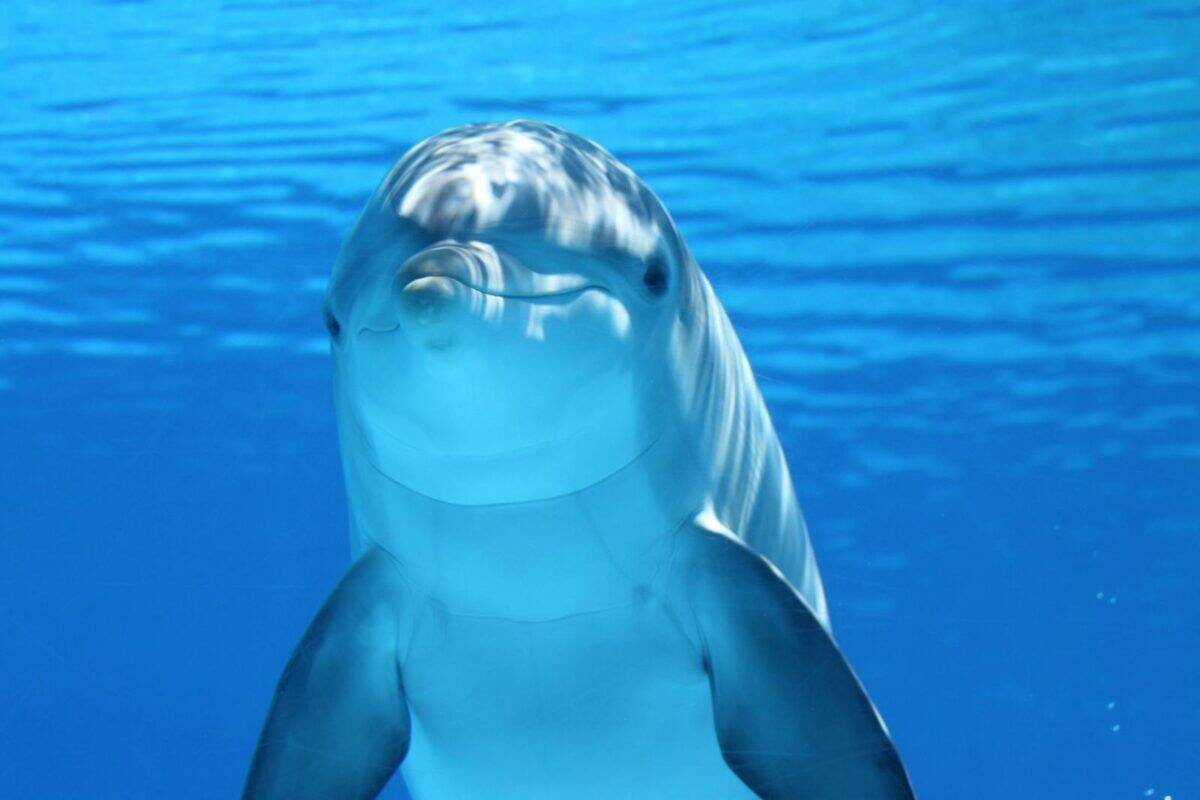
Beloved for their smiling faces and playful antics, dolphins hide a dark side that marine biologists rarely discuss. These highly intelligent cetaceans engage in shocking behaviors including infanticide, gang rape, and torture of other species for amusement. Their 8-inch long, conical teeth can inflict devastating wounds.
Disturbing Dolphin Behaviors
Documented cases include:
- Killing porpoises by ramming them for “practice”
- Isolating female dolphins for weeks of forced mating
- Playing keep-away with pufferfish to get “high”
- Deliberately drowning baby rivals
Some populations have 50% mortality rates for first-year calves.
Human Interactions Gone Wrong
Dangerous encounters:
- Florida: Dolphin broke swimmer’s ribs during “play”
- Japan: Pod repeatedly rammed fishing boat for hours
- Brazil: Male dolphins becoming sexually aggressive with humans
- Captivity: Multiple trainer deaths from deliberate attacks
Their intelligence makes them unpredictable.
Marine Biologist Warnings
“Dolphins are essentially aquatic sociopaths,” says Dr. Richard Connor. “Their intelligence isn’t paired with morality – they do what amuses them, regardless of consequences. We’ve documented them killing just to see what happens next.”
6. Swan – Feathered Fury on the Water

With their graceful necks and snow-white plumage, swans epitomize elegance – until they decide you’re a threat. These territorial birds possess terrifying strength and aggression, especially during nesting season. Their beautiful appearance masks what ornithologists call “the most vicious temperament in avian evolution.”
Anatomy of Attack
Swans are armed with:
- 2,000 neck muscles (compared to 200 in humans)
- Wings that can deliver 300 PSI blows
- Razor-sharp beaks with serrated edges
- Ability to dive and attack from underwater
A swan’s wingspan can reach 8 feet when attacking.
Notable Swan Attacks
Recent incidents include:
- UK: Swan capsized kayaker, held him underwater
- USA: Broke photographer’s arm protecting nest
- Germany: Chased elderly woman into traffic
- Ireland: Destroyed drone “invading” territory
The Queen of England owns all mute swans in Britain due to their historical danger.
Survival Strategies
When facing an angry swan:
- Never turn your back (they attack from behind)
- Use bags or jackets as shields
- Back away slowly – running triggers pursuit
- Avoid eye contact (seen as challenge)
Cyclists should dismount as bikes resemble rival swans.
5. Leopard Seal – Antarctica’s Smiling Assassin
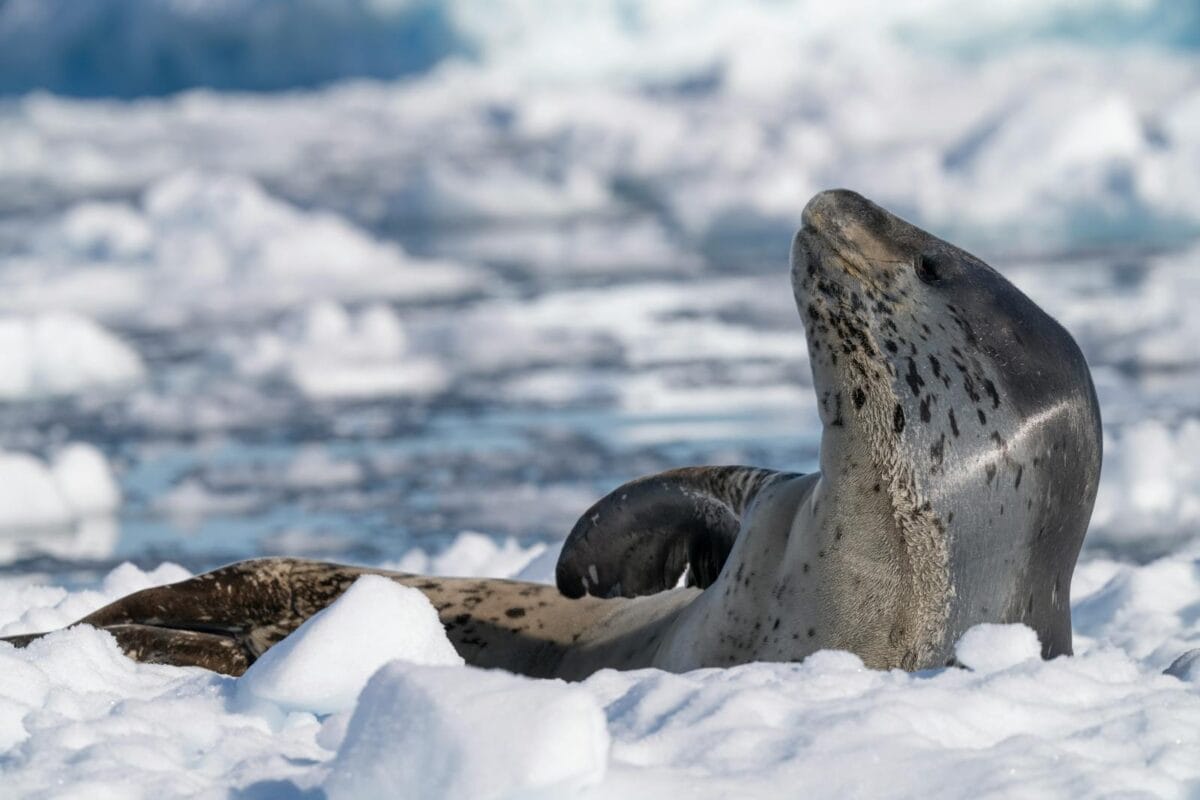
With their puppy-dog eyes and seemingly permanent grins, leopard seals look like happy ocean puppies. But these apex predators have a well-documented history of playing with their food – sometimes while it’s still alive. Their casual cruelty makes them one of nature’s most disturbing predators.
The Perfect Predator
Leopard seals possess:
- 1.5-inch-long canine teeth
- Jaws that open 160 degrees
- Serrated back teeth for stripping flesh
- Ability to swim 25 mph in bursts
They can weigh up to 1,300 pounds of pure muscle.
Disturbing Hunting Tactics
Documented behaviors include:
- Playing “keep away” with live penguins
- Skinning seals from the inside out
- Drowning scientists by holding them underwater
- Stalking divers for hours out of curiosity
They often eat only the most nutritious parts of prey.
Famous Antarctic Encounter
National Geographic photographer Paul Nicklen captured footage of a leopard seal repeatedly bringing him live penguins – seemingly trying to teach him to hunt. “She could have killed me instantly, but chose to interact instead. It was terrifying and beautiful.”
4. Poison Dart Frog – Nature’s Toxic Jewel
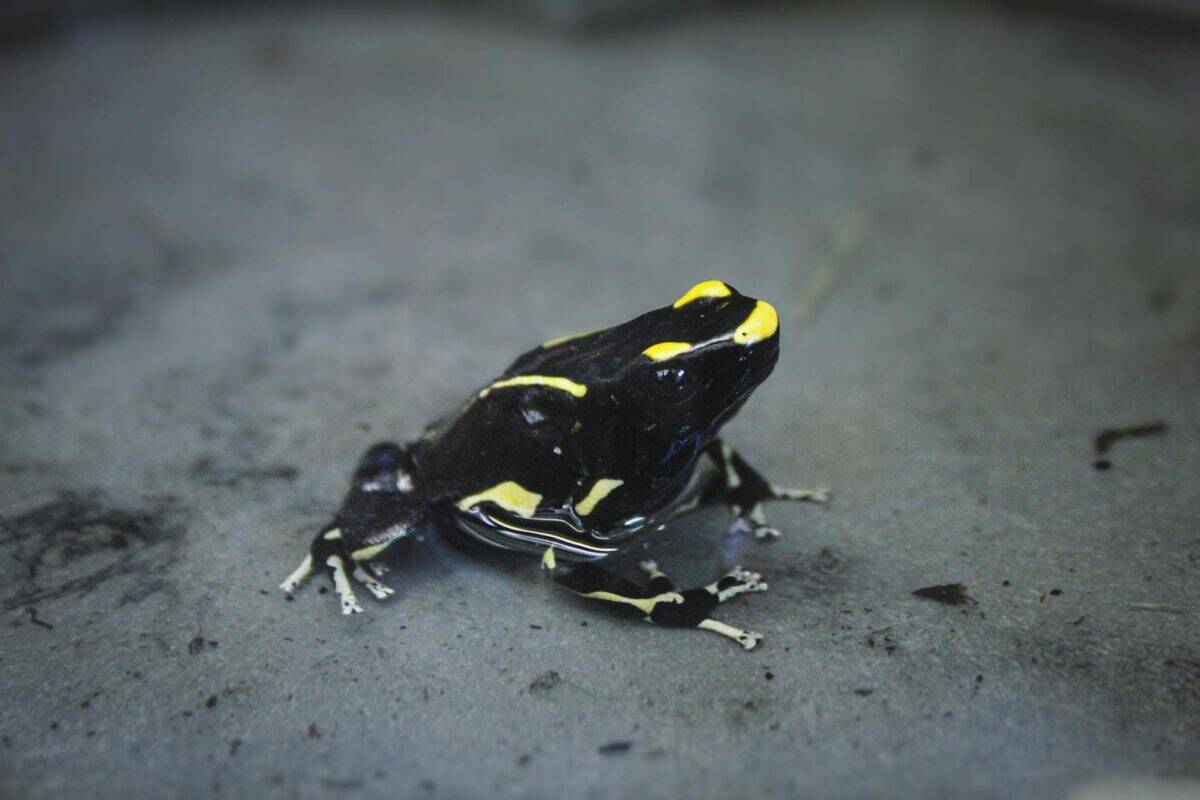
No bigger than a paperclip and dressed in neon colors, poison dart frogs look like living gemstones. But their vibrant skin secretes enough neurotoxin to kill 10 grown men. Indigenous tribes once used their poison to create lethal hunting darts – hence their ominous name.
Deadly Skin Chemistry
A single frog carries:
- Batrachotoxin (stops nerve impulses)
- Enough poison to kill 20,000 mice
- Toxins 200x stronger than morphine
- Compounds that resist breaking down
Just touching them can cause paralysis.
Captive vs Wild Danger
Interesting facts:
- Captive-bred frogs lose toxicity (diet-based)
- Wild frogs get poison from eating toxic mites
- Most dangerous species is golden poison frog
- No known antidote for their toxins
Zoo handlers still wear gloves as precaution.
Research Breakthroughs
Scientists are studying:
- Using frog toxins for painkillers
- Potential heart medication applications
- How frogs resist their own poison
- Bioengineered versions for medical use
Their toxins could revolutionize medicine.
3. Tasmanian Devil – The Nightmare Jaws
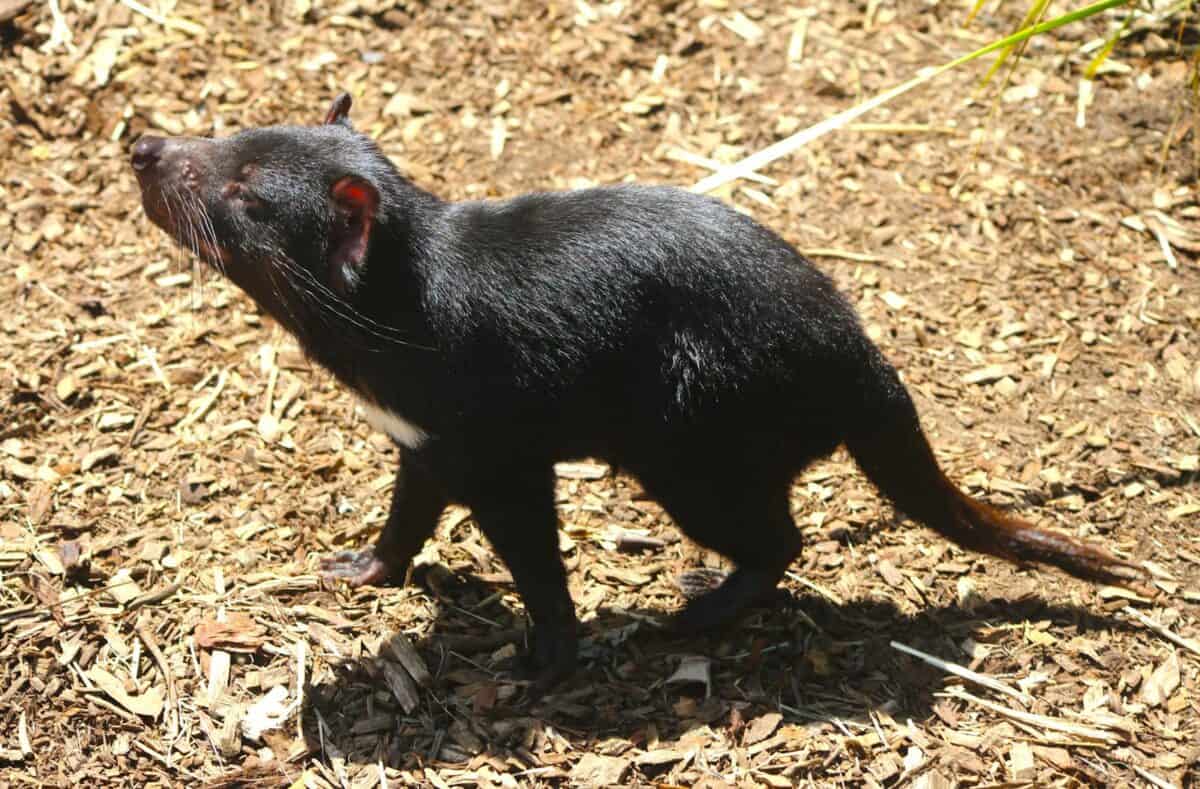
These stocky marsupials gained fame from their Looney Tunes counterpart, but real devils are far more terrifying. Their bone-crushing bites and bloodcurdling screams earned them their demonic name. Since the 1990s, they’ve been battling a contagious facial cancer that makes them even more aggressive.
Bite Force Phenomenon
Tasmanian devils can:
- Bite through metal traps
- Generate 1,200 PSI bite force
- Crush bones with ease
- Eat 40% of their body weight daily
Their jaws open 80 degrees for maximum damage.
Contagious Cancer Crisis
Devil Facial Tumor Disease:
- Spread through biting during fights
- 90% mortality rate in affected areas
- Causes starvation by growing on faces
- Forced major conservation efforts
Some populations declined by 90%.
Encounter Warnings
If encountering a devil:
- Never approach feeding animals
- Watch for raised hackles
- Back away slowly if they scream
- Don’t run (triggers chase instinct)
They can run 8 mph for short bursts.
2. Hippopotamus – Africa’s Chubby Charger
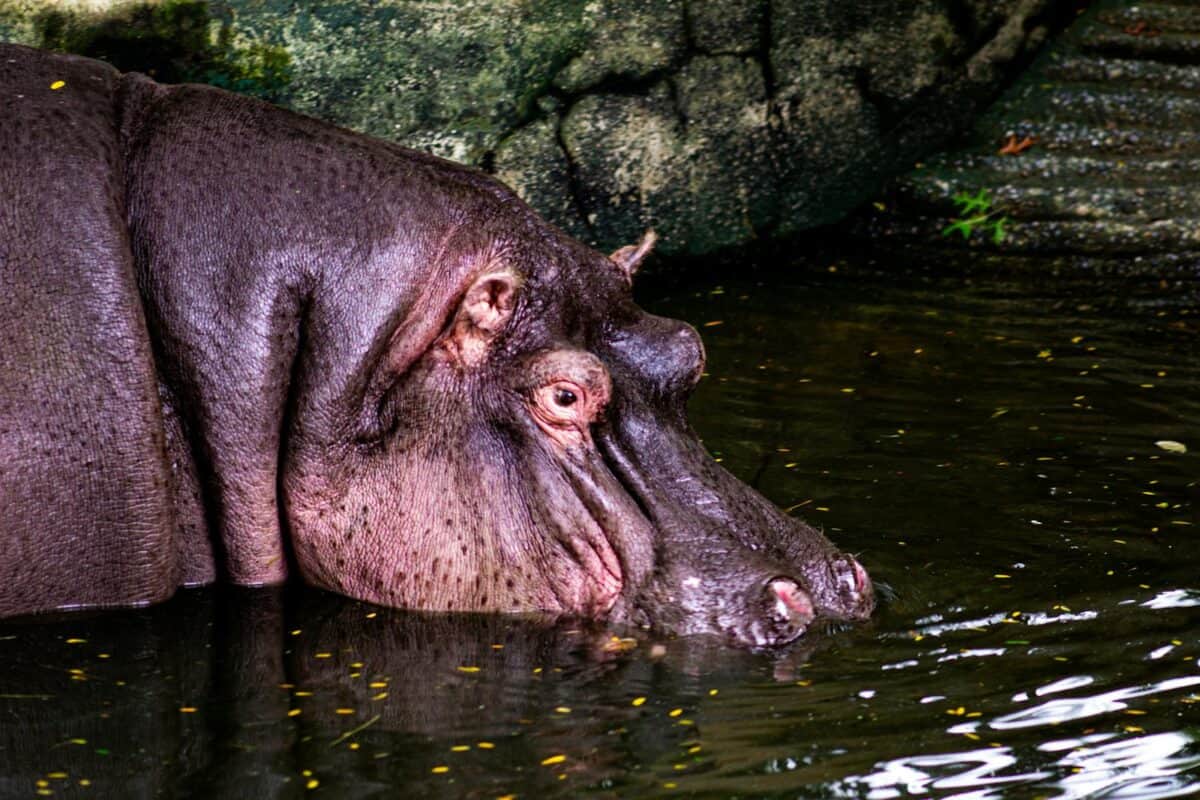
Plump, pink, and perpetually yawning, hippos seem like lazy river potatoes. But these 3-ton beasts kill more Africans annually than lions, earning them the title of continent’s deadliest large animal. Their territorial nature and surprising speed make them incredibly dangerous.
Attack Capabilities
Hippos can:
- Run 19 mph on land
- Bite with 1,800 PSI force
- Snap canoes in half with jaws
- Hold breath for 5 minutes underwater
Their 20-inch teeth never stop growing.
Notable Attacks
Recent incidents:
- 2014: Killed 13 schoolchildren in Niger
- 2018: Sank tourist boat in Malawi
- 2020: Chased safari truck for 1 mile
- 2022: Killed photographer in South Africa
They’re extremely territorial in water.
Survival Tips
Around hippos:
- Stay at least 50 yards away
- Never get between water and a hippo
- Climb trees if charged on land
- Avoid muddy paths (they use as highways)
Most attacks occur at dusk.
1. Polar Bear – The Arctic Assassin
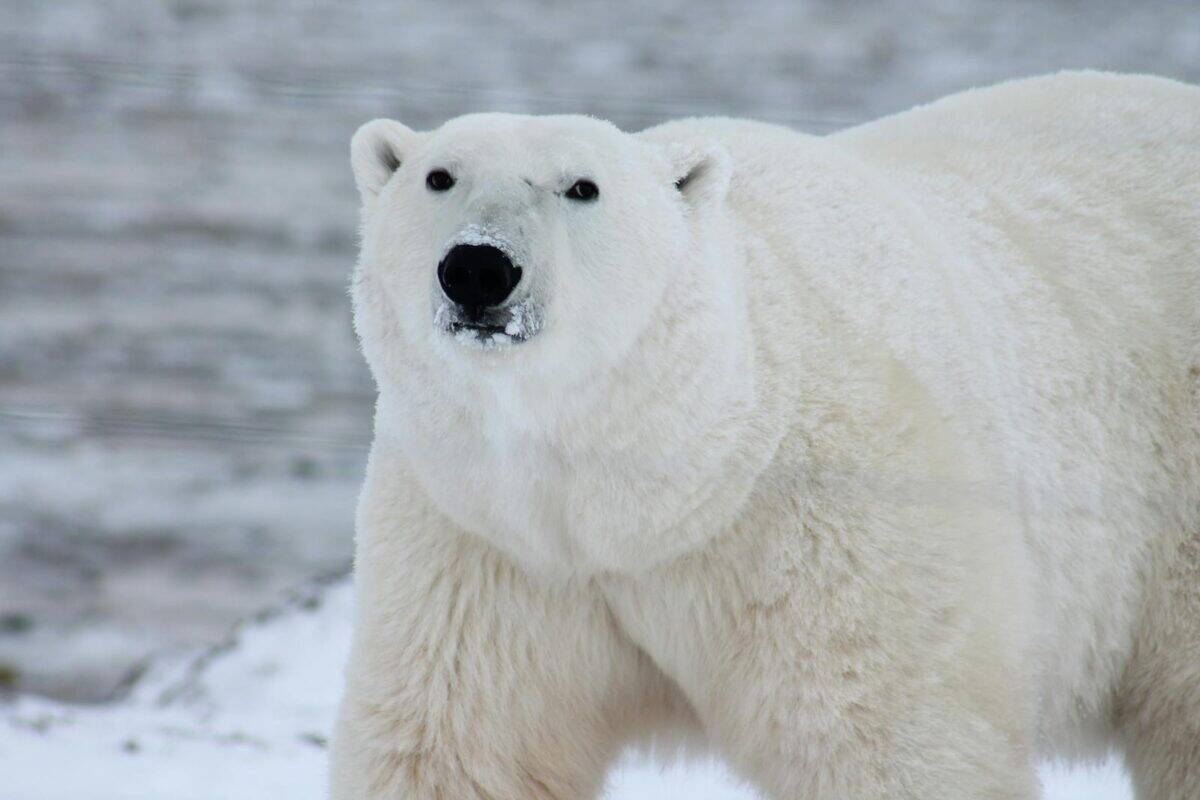
Fluffy white coats and roly-poly appearances make polar bears seem like giant teddy bears. But these massive predators view humans as prey. Climate change has made them increasingly aggressive as hunting grounds disappear. There’s no more dangerous land predator on Earth.
Predatory Perfection
Polar bears possess:
- 3-inch claws for gripping ice (and flesh)
- Sense of smell detecting prey 20 miles away
- 1,200 PSI bite force
- Ability to sprint 25 mph in snow
They can weigh over 1,500 pounds.
Human Encounters
Recent attacks:
- 2021: Killed French tourist in Norway
- 2018: Mauled cruise ship guard in Svalbard
- 2013: Broke into Russian weather station
- 2011: Killed British students in Norway
They’re the only bears that actively hunt humans.
Safety Protocols
In polar bear country:
- Always carry flare guns and bear spray
- Travel in groups of 4+ people
- Watch for fresh tracks (check wind direction)
- Never run – triggers chase response
Many Arctic workers carry rifles as last resort.
Conclusion: Respecting Nature’s Complexity
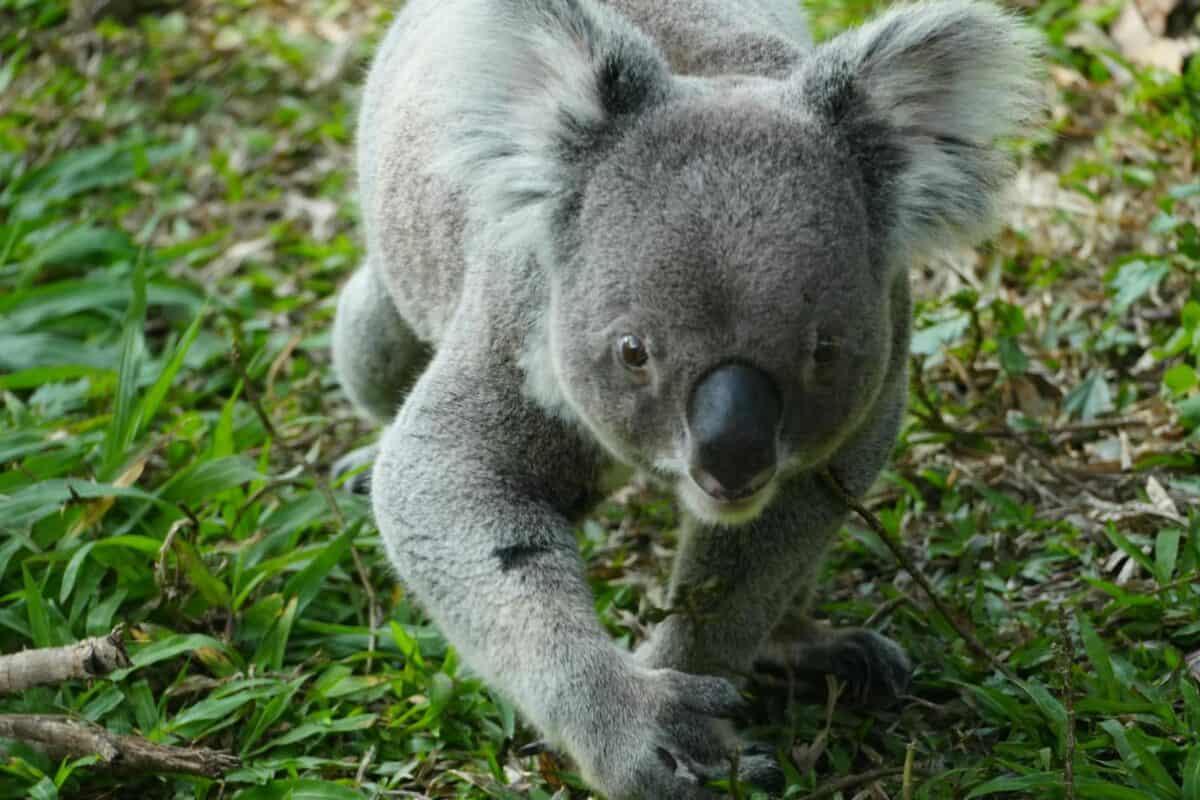
This countdown reveals nature’s fascinating paradox – that danger often wears the most charming disguises. While we shouldn’t fear these animals unnecessarily, we must respect their true capabilities. Their beauty and ferocity represent two sides of the same evolutionary coin, shaped by millennia of survival pressures.
Final Thoughts

The most dangerous assumption we can make is judging an animal by its appearance alone. As wildlife habitats shrink and human-animal interactions increase, understanding these hidden dangers becomes crucial for coexistence. Remember: in nature, the cutest faces often hide the sharpest teeth – and that’s exactly how evolution designed them.
Safety Resources

For responsible wildlife viewing:
- International Wildlife Safety Foundation guidelines
- National park service animal encounter protocols
- Local wildlife authority advisories
- Certified guide training programs
Always research before encountering unfamiliar animals.
- 10 Dog Breeds That Look Like Wild Animals – But Make Great Pets! - August 4, 2025
- 15 Dog Breeds That Will Protect You at Any Cost - July 18, 2025
- 10 Most Expensive Pets Only the Rich Can Afford - July 16, 2025

